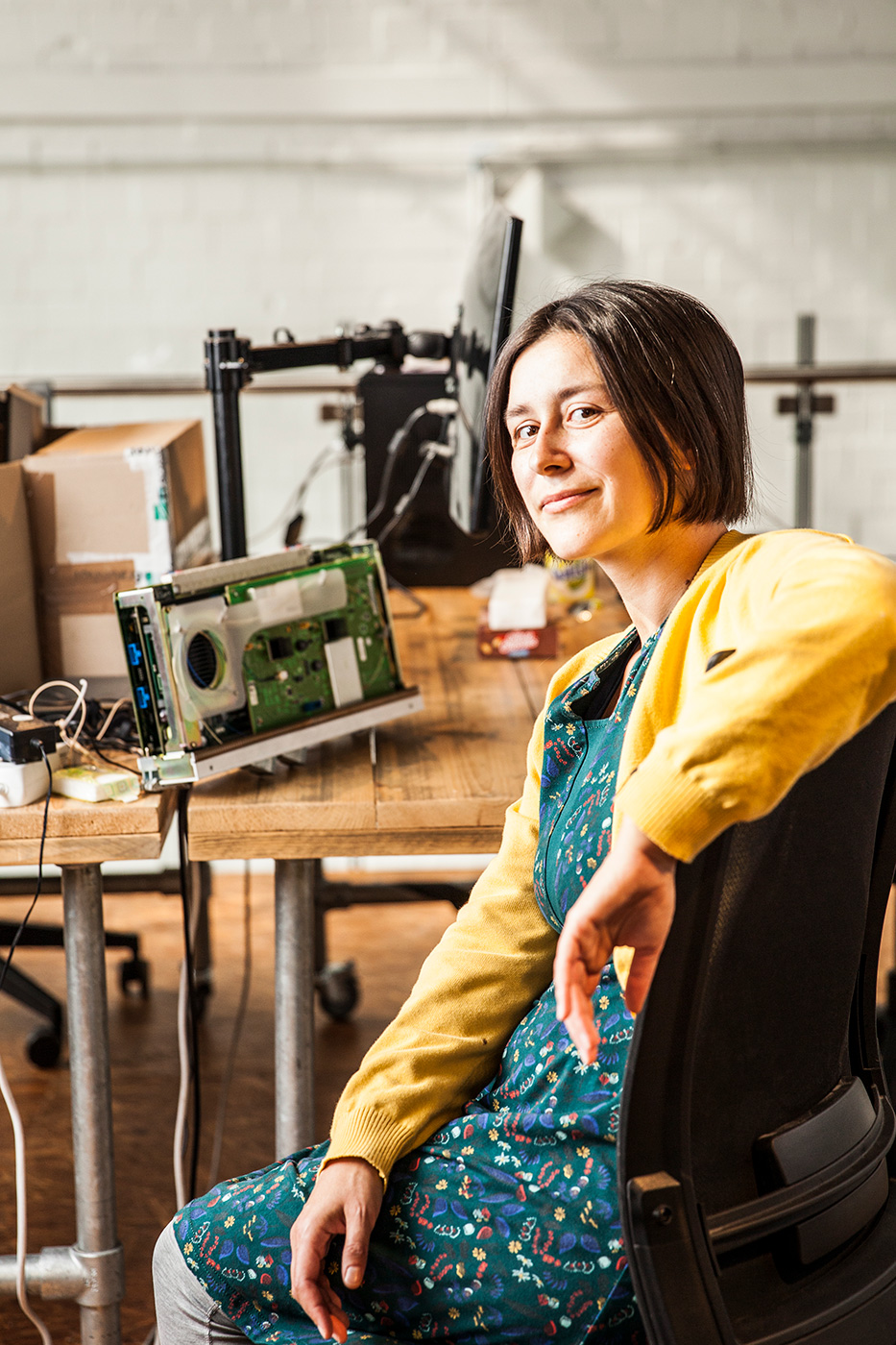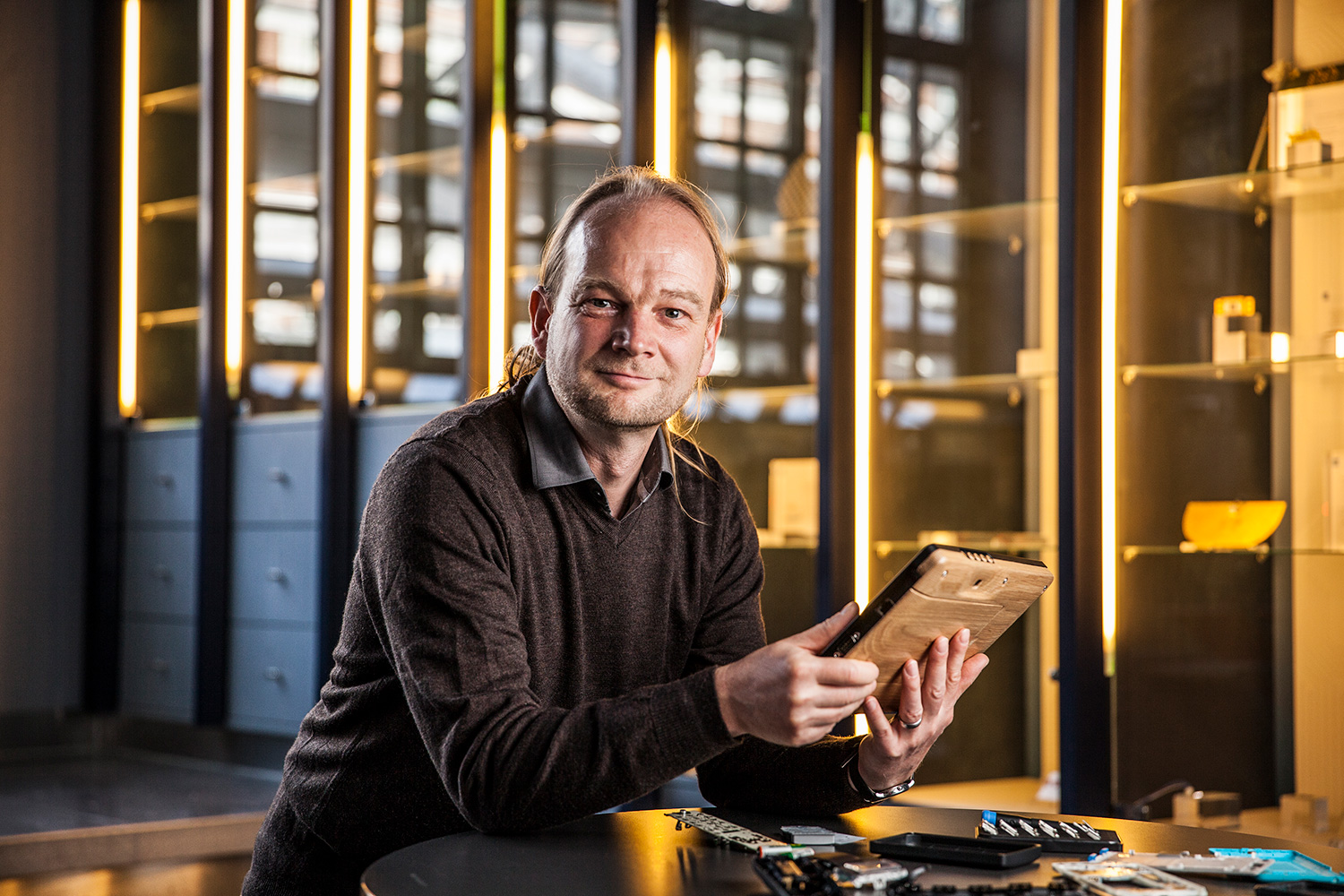Until now, the circular economy has primarily been viewed as an aspect of climate policy, but with the global raw material shortage, it is becoming an ever more relevant topic for industry. The Center for Responsible Research and Innovation (CeRRI) of the Fraunhofer IAO, the Fraunhofer Center for International Management and Knowledge Economy IMW and the Fraunhofer Institute for Environmental, Safety and Energy Technology UMSICHT have joined forces with Foundation 2° and the Foundation for Family Businesses to explore the potential that the circular economy can offer family businesses, in a study covering challenges, solutions and recommendations for further action. With a view to jump-starting the circular economy, the study made concrete recommendations for the German government, such as creating manageable standards for recycled materials. The results are promising: For example, when producing vehicle parts, one of the 21 companies surveyed has saved 85 percent on raw materials and 55 percent on its energy requirements when compared to new parts. Another manufacturer has increased its aluminum production by 20,000 tons per year, by recycling and by expanding its production plants. A further example case has proved that hot-dip galvanization can save 80 percent more zinc than conventional processes.
“If Europe wants to become independent, we need a circular economy – after all, we don’t have any cobalt or nickel here, or manganese either,” states Dr. Benjamin Balke. Dr. Balke, who leads a department at the Fraunhofer Research Institution for Materials Recycling and Resource Strategies IWKS, is working on recycling basic e-mobility components that contain critical raw materials such as cobalt and rare-earth metals, as part of the HydroLIBRec project. To be precise, he’s focusing on the lithium-ion batteries that are used in electric vehicles.
The first questions the Fraunhofer IWKS researchers must ask themselves is, how far do they want to break down the material? The complex intermetallic compounds are hard to separate, after all – for example, it would take a lot of energy to break the compounds all the way down to the pure elements. “That’s why we prefer functional recycling,” says Balke. For batteries, that means the cathode material is not separated into the individual metals, but rather is recycled as a complex compound. Disassembly is a fundamental aspect of cost-effective recycling. Shredding the batteries is not practical, as that leaves the individual fractions mixed together and it is extremely hard to extricate them again.
However, manual disassembly costs too much time and money, so the research teams developed an automated disassembly process. “To crush the entire battery by electro- hydraulic means, we place it in water and apply short high-power pulses of 40,000 volts to the liquid. That induces a shock wave in the water, which acts on the predetermined breaking points between the materials and divides them from each other,” explains Dr. Balke. The individual components – copper, aluminum, plastic – are separated out in subsequent sorting steps, leaving behind the black mass, a mixture of materials from the anodes, cathodes and electrolytes. The cathode mass contains crucial elements like nickel, manganese and cobalt. “To process this mass in an eco-friendly, cost-effective way, we run through various processes to determine the best course,” says Dr. Balke. At this point, it’s clear that in terms of quality, the recycled cathode material is already perfectly usable. The next step is to move the recycling process toward industrialization.
Recycling can also be worthwhile in the case of neodymium- iron-boron magnets, found in electric engines, hard drives, cellphones and speakers, among other things. Because 90 percent of the energy needed to manufacture these magnets is used for mining, separating and processing the rare-earth oxides they contain – material and energy costs that can be saved by recycling. The recycling process itself is ready; however, Europe still lacks systems for bringing back used batteries, as well as customers. “There’s a market for this already,” affirms Fraunhofer IWKS scientist Konrad Opelt.
Under the auspices of the FUNMAG project, Opelt is working on making old magnets usable again, and above all, on demonstrating that they are still just as powerful. “We want to show that applications that use our recycled magnets have just the same properties as with new ones,” says Opelt. “The recycling process can cause some losses in terms of quality, but it’s possible to compensate for those, for example by changing the microstructure.”
As the composition of the magnets varies depending on their applications – particularly as regards the kinds and ratios of rare-earth metals they contain – the researchers first sort them by application field and apply hydrogen to make them so brittle that they are reduced to a coarse powder. This powder can be directly used to produce new magnets. Even non-homogeneous mixtures can be used, but these are usually “downcycled,” meaning they are only suitable for lower-quality use.
While FUNMAG primarily concentrates on high-performance applications for neodymium-iron-boron magnets, the Fraunhofer IWKS researchers in the RecyPer project are investigating other possible uses. “The goal is to investigate as many types of old magnets as possible – even material that can’t be used for a traction motor anymore – and identify new fields of application for them, like holding magnets for whiteboards, for example,” says Mario Schönfeldt, Project Manager at Fraunhofer IWKS. Just as with magnets, it’s difficult, and therefore, not cost-effective to recover pure metals from small electronic devices. “A smartphone contains a pure material value of 1 euro,” reveals Karsten Schischke, Group Manager at Fraunhofer IZM. “By using metallurgical processes, we can recycle 90 cents worth of materials. The remaining 10 cents are made up of gallium, tantalum and rare-earth metals. Recovering those materials is unlikely to become profitable for another ten to 20 years yet.” Schischke was the coordinator for the project sustainablySMART; this collaborative initiative between Fraunhofer IZM and 17 other partners from eight EU member states is notable for winning the Ralf Dahrendorf award for the European Research Area. Its objective is to extend the life cycle of mobile information and communication devices by developing new product design solutions – thus saving on rare-earth metals as well. The project’s targets also include device repairability. “Way back in the beginning, PCs were modular devices. Now, an exciting question is being raised: How can we apply this concept to small devices?” says Schischke.
An important factor here is continued miniaturization, which the research team is using to create space for plug-in connectors. These make it possible not only to replace defective components quickly and easily, but also to recover and reuse individual semi-conductor components from devices such as smartphones, e.g. in less complex internet-of-things applications. The Fraunhofer IZM research team took on the strategic aspect, and is analyzing which components it would make sense to recover in this way. In the MoDeSt project, Fraunhofer IZM and the company Shift have also set their sights on extending the life cycle of small devices. “Repairability and modularity are interlocking concepts,” explains Schischke. “If the devices are constructed on a modular basis, it requires a greater initial investment in certain raw materials – for example, you need gold to make the connectors.” This approach pays for itself if the consumers use the devices for five years rather than three, as earlier projects have already shown, with savings of around 30 percent. “The especially exciting thing is that we got to reuse these results on behalf of the European Commission, to figure out how they can legislate for improved repairability and durability, and extended product life. Next year or the year after, we can expect the first smartphone regulations to address requirements for product design, availability of replacement parts, battery life, prevention of damage from dropping, and other measures aimed at extending product life,” predicts Schischke.
Valuable metals and rare-earth metals can also be found in electronic waste, such as LCD panels. However, these plastic-based shredder scraps contain large quantities of impurities such as flame retardants – meaning they get incinerated as waste, with metals such as indium, gallium, palladium and silver being lost in the process. Hoping to change this, researchers in the Fraunhofer Cluster of Excellence Circular Plastics Economy CCPE – a group combining expertise from six Fraunhofer Institutes along the entire life cycle of plastic products – have developed a process for recycling plastic- based compound materials at Fraunhofer UMSICHT. “We heat the shredder scraps up to 500 to 600 degrees Celsius without oxygen, which converts the plastic to the vapor phase,” explains Dr. Alexander Hofmann, Head of the Recycling Management Department at the Sulzbach-Rosenberg institute branch of Fraunhofer UMSICHT. “Then we cool the vapor down again and condense it into pyrolysis oil. The oil is separated from the coke in the process, leaving the pyrolysis coke and the metals it contains behind.” The pyrolysis coke can then be taken to copper smelting plants for further, cost-effective processing using established methods, and the metals can be recovered. A pilot plant has already been established, with a throughput capacity of 70 kilograms per hour, a rate that the Fraunhofer spin-off, Recycling Solutions Lippetal RSL, is currently scaling up – to 250 kilograms per hour. The plant is scheduled for completion in 2022.

